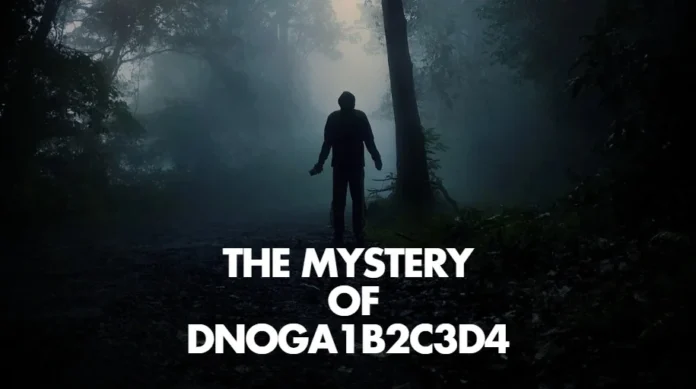Introduction
In the fast-moving world of technology, strange codes like dnoga1b2c3d4 can appear without warning, sparking curiosity and concern. This cryptic sequence has been spotted in blogs, code repositories, configuration files, and even random online discussions. While at first glance it may seem like harmless gibberish, its repeated appearance in unexpected places raises important questions. Could it be a security marker, a developer’s placeholder, or part of a larger hidden system? In this guide, we’ll break down what dnoga1b2c3d4 could mean, explore where it’s showing up, look into the possible risks, and explain how you can stay safe if you encounter it. Our aim is to give you a clear, trustworthy, and practical overview—backed by solid reasoning—so you can make informed decisions about your digital security.
1. What Is “dnoga1b2c3d4”?
The term dnoga1b2c3d4 refers to a seemingly random alphanumeric string that has been detected in multiple digital environments. Although no official documentation exists for it, several theories attempt to explain its purpose.
Possible interpretations:
- Cybersecurity marker — a unique identifier used in malicious code or network tracking.
- Digital watermark — a hidden signature inserted into files or websites to trace their origin.
- Developer placeholder — a test string accidentally left in public code.
- Command trigger — a hidden instruction that activates certain functions under specific conditions.
2. Where Is It Appearing?
Reports suggest that dnoga1b2c3d4 has been found in:
- HTML meta tags and hidden page elements.
- Configuration files such as JSON or XML.
- Server and API logs.
- GitHub repositories and code comment sections.
- Blog posts or directory pages with little explanation.
Its scattered and inconsistent presence makes it difficult to trace to one source or purpose.
3. Why It Raises Cybersecurity Concerns
Unexplained repetition
The string has shown up in unrelated systems and sites, making it suspicious.
Hidden placement
Finding it buried in code, especially in non-visible web elements, could indicate intentional concealment.
No official source
Without a known origin or associated service, its presence can’t easily be verified as safe.
4. Could It Be Harmless?
Not all appearances of dnoga1b2c3d4 are malicious. Developers often use random codes as placeholders or test identifiers during software creation. Sometimes, these are left behind accidentally after deployment. In such cases, the string is harmless but should still be removed for cleanliness and security best practices.
5. Related LSI Keywords
- digital watermarking
- malware identifier
- developer token
- cybersecurity marker
- placeholder code
- code injection
- configuration files
- digital footprint
- hidden script
- meta tags
6. What To Do If You Encounter It
- Audit your codebase — Search for the string across all files and identify where it appears.
- Check for intention — Confirm whether it was added deliberately as part of testing.
- Run security scans — Use trusted antivirus and endpoint security tools.
- Monitor network activity — Look for suspicious connections or data transfers.
- Remove unknown code — Clean up unnecessary or unexplained strings.
- Stay informed — Follow cybersecurity updates for news about unusual code patterns.
Summary Table
| Aspect | Details |
|---|---|
| What | The mysterious code dnoga1b2c3d4 with unknown origin. |
| Where Found | HTML meta tags, configs, logs, repositories, blogs. |
| Possible Uses | Malware marker, digital watermark, developer placeholder, command trigger. |
| Main Concerns | Repeated unexplained appearances, hidden in code, no documentation. |
| Action Steps | Audit, scan, remove, monitor, stay informed. |
FAQs
Q1: What does dnoga1b2c3d4 mean?
A: It’s an unidentified code string possibly used as a malware marker, digital watermark, or placeholder.
Q2: Is dnoga1b2c3d4 dangerous?
A: Not always—but if you didn’t add it yourself, treat it with caution and investigate.
Q3: Should I remove dnoga1b2c3d4 from my website?
A: Yes, unless you can confirm its purpose and origin.
Q4: Could it be a harmless test token?
A: Yes, it could be a developer’s placeholder. However, cleanup is still recommended.
Q5: How do I report suspicious instances?
A: Contact your hosting provider, IT department, or a cybersecurity specialist.
Read More: dnoga1b2c3d4: Unraveling the Digital Enigma
Conclusion
In today’s interconnected world, even small and mysterious code fragments like dnoga1b2c3d4 deserve attention. While the string may be a harmless placeholder in some contexts, its repeated and unexplained appearance across different systems suggests that caution is warranted. By auditing your files, scanning for threats, and removing unnecessary code, you protect both your data and your users. Remaining alert to unusual patterns is part of a strong cybersecurity mindset. The best defense is awareness, combined with proactive steps to verify and secure your environment—because in cybersecurity, the unknown can often be the first sign of something significant.
